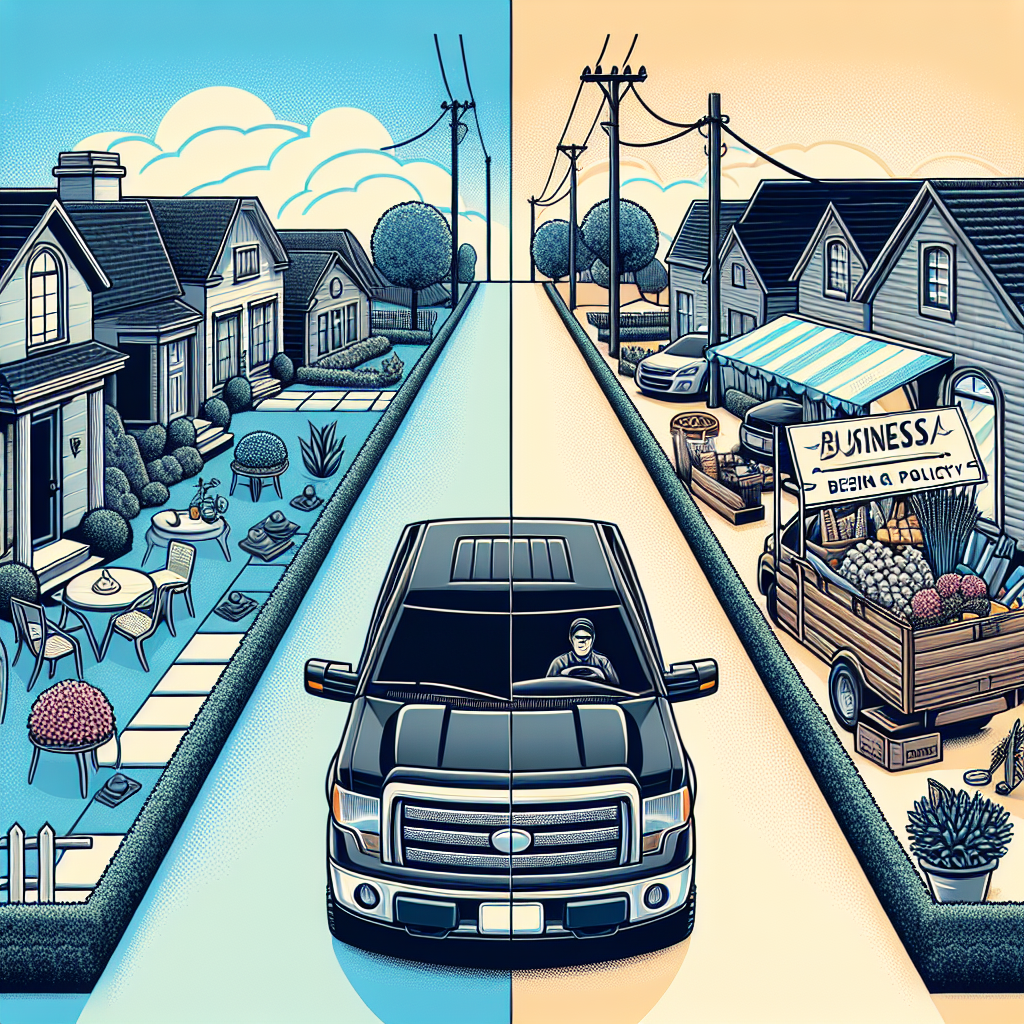Filed under Home Insurance on
How Much Coverage Should I Get for Home Insurance Guide

Your home policy does more than protect walls and a roof—it shields your finances from the shock of rebuilding, replacing belongings, or defending a lawsuit. The challenge is sizing coverage correctly so you’re not overpaying, but you’re also not left short after a loss. In this How Much Coverage Should I Get for Home Insurance Guide, you’ll learn a practical, research-backed way to estimate the limits you need, understand common traps to avoid, and tailor your policy to your home, budget, and risk profile.
Start with what a standard policy actually covers
Most homeowners policies (HO-3 or HO-5) group protection into several buckets. Knowing each bucket helps you decide where to add or trim coverage.
- Dwelling (Coverage A): Rebuilds the structure—your walls, roof, built-in cabinets, and attached garage.
- Other Structures (Coverage B): Separate structures like fences, sheds, and detached garages, usually 10% of Coverage A by default.
- Personal Property (Coverage C): Your belongings—furniture, clothing, electronics, and art. Typically 50% to 70% of Coverage A as a starting point.
- Loss of Use (Coverage D): Pays for additional living expenses if your home is uninhabitable after a covered loss, often 20% to 30% of Coverage A.
- Personal Liability (Coverage E): Covers legal defense and settlements if you’re liable for injuries or property damage to others.
- Medical Payments to Others (Coverage F): Small, no-fault payments for minor injuries on your property.
Beyond the standard package, endorsements and separate policies can fill big gaps, such as flood or earthquake risk. Throughout this How Much Coverage Should I Get for Home Insurance Guide, you’ll see where those extras matter most.
Dial in your dwelling coverage: the rebuild number that matters
Market value vs. reconstruction cost
Your dwelling limit should reflect what it costs to rebuild your home after a total loss, not what your home would sell for or what you owe on your mortgage. Land value and neighborhood desirability inflate market price, but they don’t affect the cost of framing lumber or roofing shingles.
Reconstruction costs include materials, labor, debris removal, architect/engineering fees, permit and inspection fees, and cost escalations when demand spikes after major catastrophes. According to industry estimators and construction analysts, rebuild costs have climbed in recent years due to volatile material prices and labor shortages. Core industry sources consistently note that price swings can be steep after hurricanes and wildfires, which is why setting—and annually adjusting—a realistic limit is vital.
Quick formula for a credible estimate
- Find local rebuild cost per square foot. Get input from a contractor, a local appraiser, or your insurer’s estimator. In many U.S. markets, reconstruction ranges from roughly $180 to $350 per square foot for standard finishes, with higher-end custom homes exceeding $400.
- Multiply by your home’s finished square footage. Include finished basements, built-ins, and attached structures.
- Add for unique features: specialty roofing, custom millwork, high-end appliances, masonry, or solar panels.
- Account for code upgrades and debris removal, which are often separate sublimits or endorsements.
Example: A 2,200-square-foot home x $240/sq ft = $528,000 base. Add $25,000 for custom cabinetry and $15,000 for a complex roofline: $568,000. Ensure your policy includes enough for code upgrades and debris removal on top of that—or endorsements that lift those limits.
Replacement cost, extended replacement, and guaranteed replacement
- Replacement Cost (RC): Pays to rebuild with similar materials without subtracting for depreciation, up to your limit.
- Extended Replacement Cost (ERC): Adds a cushion (e.g., 10%–50%) above your limit to handle cost spikes after a disaster.
- Guaranteed Replacement Cost (GRC): Rebuilds your home no matter the final price. Not all insurers offer it, and underwriting can be stricter.
If your market faces frequent catastrophe-driven demand surges, ERC or GRC significantly reduces the risk of being short. Many carriers also include an inflation guard to automatically raise your limit annually; still, verify that it keeps pace with local construction trends.
Don’t forget code and ordinance upgrades
Ordinance or Law coverage pays for bringing older parts of your home up to current code during a rebuild—an expense regular dwelling coverage may not fully cover. Consider 10%–25% of Coverage A as a rule of thumb, more for older homes or strict building jurisdictions.
Make personal property protection fit your lifestyle
Set the right limit—don’t default blindly
Default personal property limits often equal 50%–70% of your dwelling limit, but your needs may differ. A minimalist in a small home could require less; a gear-heavy household, collector, or large family may need more.
Create a quick home inventory to size your limit and streamline future claims:
- Walk room to room, record a short video, and narrate items and brands.
- Scan receipts or statements for big-ticket purchases.
- Store the inventory securely in the cloud.
Replacement cost vs. actual cash value for belongings
Replacement cost coverage for personal property pays to replace items with new ones of similar kind and quality. Actual cash value (ACV) subtracts depreciation, which can dramatically reduce payouts for electronics, furniture, or clothing. If budget allows, upgrade to replacement cost for personal property to avoid depreciation surprises.
Watch for category sublimits
Most policies cap certain items unless you “schedule” them (add a specific endorsement with appraisals). Common sublimits include jewelry, watches, furs, firearms, silverware, collectibles, and cash. If you own a $10,000 engagement ring but your policy’s jewelry theft limit is $1,500, schedule the ring so it’s protected up to its appraised value, often with broader coverage and no deductible on that item.
Right-size your liability and medical payments
Liability coverage pays your legal defense and settlements if you’re held responsible for injuries or property damage. Many homeowners carry $300,000; a growing number opt for $500,000 given higher legal costs. If you have significant assets or future earnings to protect, ask about a personal umbrella policy in $1 million increments that sits on top of your home and auto liability limits.
Medical payments is a small, no-fault coverage—commonly $1,000 to $5,000—that can help address minor injuries on your property without litigation.
Loss of use: a lifeline during repairs
Loss of use pays additional living expenses when your home is uninhabitable due to a covered loss. Think short-term rentals, meals, laundry, increased commuting costs, and pet boarding. Most policies set this at 20%–30% of dwelling coverage; families in high-cost housing markets or with special needs may want more.
Deductibles and wind/hail/hurricane nuances
The deductible is what you pay out of pocket per claim. Higher deductibles usually mean lower premiums. However, wind/hail, hurricane, and named-storm deductibles are often separate and percentage-based (1%–5% of Coverage A). In hail-prone states, roof claims may carry special terms (like ACV-only roof coverage on older roofs). Understand which perils carry separate deductibles and whether your roof is covered on a replacement cost or ACV basis—this can make a five-figure difference after a storm.
Earthquake and flood are typically excluded from standard policies. If you live near fault lines, coastlines, rivers, or in heavy-pluvial-flood zones, consider separate policies. Also consider sewer/water backup coverage; it’s not a flood policy, but it’s essential for sump pump failures or drain backups.
Endorsements that close common gaps
- Water Backup and Sump Overflow: Often available in $10,000–$50,000 limits; a top claim driver in many regions.
- Service Line: Covers underground utilities from the street to your home—water, sewer, electric—usually excluded otherwise.
- Equipment Breakdown: Protects HVAC, appliances, and home systems from mechanical/electrical breakdowns.
- Ordinance or Law: Boosts code-upgrade funds beyond standard sublimits.
- Scheduled Property: For jewelry, fine art, collectibles, or musical instruments beyond sublimits.
- Cyber and Identity Theft: Increasingly relevant for connected households.
- Mold and Fungi: Coverage varies widely; consider if you’re in humid climates or have a history of leaks.
Risk factors that change “how much” you need
Roof age and type
Insurers weigh roof condition heavily. A newer, well-rated roof (impact-resistant shingles, metal, or tile) can earn discounts and replacement cost coverage. Older roofs may trigger ACV-only settlements or higher deductibles. Hip roofs often rate better than gable roofs in wind-prone areas.
Local hazards
- Hurricane/Wind: Consider higher dwelling limits, robust roof coverage, and hurricane shutters or impact windows for credits.
- Wildfire: Maintain defensible space (cleared vegetation, ember-resistant vents), upgrade to Class A fire-rated roofing, and consider higher ALE limits due to displacement risk.
- Freeze/Water: Install smart leak sensors and automatic shutoff valves for discounts and fewer headaches.
- Earthquake: In seismic zones, consider a separate policy with an appropriate deductible and code-upgrade add-ons.
- Flood: Even outside FEMA high-risk zones, heavy rainfall can cause basement floods. Evaluate a private flood policy if NFIP limits are insufficient for your home value.
Premium planning and savings without sacrificing protection
- Bundle home and auto with one carrier to unlock multi-policy discounts.
- Increase general deductibles if you can self-insure small losses; reserve insurance for catastrophic events.
- Document mitigation upgrades (roof improvements, leak sensors, monitored alarms); ask for credits.
- Keep claims frequency low; small, frequent claims can raise rates more than one large event.
- Shop carriers with strong financial ratings and solid claims reputations—not just the lowest price.
A step-by-step toolkit to set your limits
- Measure your finished square footage and list premium features (custom cabinetry, specialty roofing, smart systems).
- Get a local rebuild cost per square foot from a contractor or insurer estimator; stay current with annual updates.
- Select RC plus Extended or Guaranteed RC if available in your area; add adequate Ordinance or Law coverage.
- Take a basic home inventory to size personal property coverage; choose replacement cost for belongings if possible.
- Set liability at a minimum of $300,000—ideally $500,000—and add an umbrella if you’ve got assets or higher risk exposure.
- Right-size Loss of Use (20%–30% of Coverage A or more in high-cost markets); add water backup and service line endorsements as needed.
- Choose deductibles intentionally: know your standard vs. wind/hail/hurricane deductibles, and confirm roof settlement terms.
These steps are the backbone of our How Much Coverage Should I Get for Home Insurance Guide, and they work whether your home is new construction or a century-old classic.
Three mini case studies
1) Urban condo owner
A 1,000-square-foot condo has a master policy covering the building structure, but the unit owner needs HO-6 coverage for interior finishes, personal property, liability, and loss of use. The key variable is “betterments and improvements”—cabinets, flooring, and fixtures you added. Verify the condo association’s master policy (all-in vs. bare-walls) to estimate your dwelling/fixtures coverage. Personal property replacement cost, scheduled jewelry, and robust loss of use are often more valuable than a high dwelling limit in this scenario.
2) Suburban family home
A 2,400-square-foot home in a hail-prone state opts for impact-resistant shingles, unlocking a discount and preserving replacement cost roof coverage. Dwelling coverage is set via $230/sq ft x 2,400 = $552,000 plus $20,000 for custom millwork, with 25% extended replacement. They choose $500,000 liability, $30,000 water backup, and a named-storm deductible of 2%. Personal property is 60% of dwelling, with scheduled coverage for a $12,000 ring. Loss of use is 30% due to limited short-term rental inventory in their area.
3) Rural custom home
A 3,000-square-foot rural property with unique timber framing and off-grid systems faces cost uncertainty if a wildfire strikes. The owners select Guaranteed Replacement Cost, 25% Ordinance or Law, and higher Loss of Use. Service line and equipment breakdown endorsements protect well pumps and solar inverters. They install defensible space and ember-resistant vents to lower risk and pursue credits. An umbrella policy of $2 million tops off $500,000 home liability due to acreage and frequent guests.
Common mistakes—and how to avoid them
- Using purchase price to set dwelling limits. This ignores land value and leads to underinsurance or overspending.
- Forgetting code upgrades and debris removal. Both can add significant costs after a total loss.
- Accepting ACV for personal property when replacement cost is affordable. Depreciation stings on electronics and furniture.
- Overlooking sublimits for jewelry and collectibles. Schedule valuables to avoid low payouts.
- Ignoring separate wind/hail or named-storm deductibles. A 2% deductible on a $600,000 home equals $12,000 out of pocket.
- Skipping water backup coverage. It’s one of the most common and costly non-flood water losses.
- Never updating coverage. Renovations, inflation, and new purchases mean last year’s limits may be too low.
Trends and expert insight to keep your plan current
Industry data from the Insurance Information Institute shows that wind and hail are among the most frequent property claims, while fire and lightning rank among the costliest per claim. Construction inflation and reinsurance pressures have pushed premiums higher in many states from 2023 through 2025, with some coastal and wildfire-exposed regions seeing larger jumps. Building code updates, skilled labor shortages, and supply-chain variability continue to influence reconstruction costs. Meanwhile, smart-home leak detection, impact-resistant roofing, and wildfire mitigation measures are earning meaningful discounts and improving claim outcomes.
State insurance departments and NAIC filings indicate that carriers are refining underwriting in high-risk zones, sometimes using higher wind/hail deductibles, roof age requirements, or coverage limitations. For consumers, this means two things: maintenance and mitigation matter more than ever, and review time at renewal isn’t optional. The practical approach in this How Much Coverage Should I Get for Home Insurance Guide—setting realistic rebuild limits, upgrading key endorsements, and auditing deductibles—aligns with these market shifts.
Annual renewal checklist
- Did you renovate, add a room, finish a basement, or upgrade systems? Increase dwelling and personal property limits accordingly.
- Have local construction costs changed? Ask your agent for an updated reconstruction estimate.
- Any new high-value purchases (jewelry, art, instruments)? Schedule them.
- Has your roof aged into a different coverage tier? Confirm RC vs. ACV and consider replacement or mitigation.
- Do you have the right water protections (backup, leak sensors) and service line coverage?
- Has your household changed (new dependents, at-home business, short-term rentals)? Review liability and endorsements.
- Reassess Loss of Use limits, especially if local rents spiked.
- Compare quotes every few years, focusing on financial strength and claims service, not just price.
Quick FAQs
How often should I update dwelling coverage?
Review annually or after any renovation. Ask your agent for updated reconstruction estimates, especially if materials or labor costs are rising in your area.
Is extended replacement cost worth it?
In catastrophe-prone or high-inflation markets, yes. It provides cushion when demand surges push prices beyond your limit.
How much liability coverage do most homeowners carry?
$300,000 is common; many upgrade to $500,000. Consider a $1–$5 million umbrella if you have significant assets or higher risk exposure.
Do I need flood insurance if I’m not in a high-risk zone?
About a quarter of flood claims historically come from outside high-risk areas. Evaluate your property’s drainage and consider private flood options if you want broader limits.
What deductible should I choose?
Pick the highest you can comfortably pay out of pocket, keeping in mind separate wind/hail or named-storm deductibles. The goal is to use insurance for large, not routine, losses.
Putting it all together
To get to the right number, start with reconstruction cost—not your mortgage balance or home value—and protect against cost spikes with extended or guaranteed replacement when available. Upgrade personal property to replacement cost, schedule valuables, and lift sublimits where they pinch. Choose liability limits that reflect your assets and future earnings. Tailor Loss of Use to your local rental market, and use endorsements like water backup and service line to close the most common gaps.
If you remember one thing from this How Much Coverage Should I Get for Home Insurance Guide, let it be this: the best policy is both realistic and resilient. It mirrors what it would truly take to rebuild your life after a loss and flexes with changing costs and risks. Revisit the calculations yearly, document your belongings, and lean on a reputable agent or broker to validate estimates and reveal discounts you might be missing.
Use the steps above as your personal checklist. With the framework in this How Much Coverage Should I Get for Home Insurance Guide, you can calibrate limits with confidence, protect your balance sheet, and still keep premiums in check. If you’re new to these decisions, start with your rebuild cost per square foot and inventory your belongings this week—you’ll be well on your way.
Finally, remember that the market keeps moving. Construction costs, climate risks, and insurer underwriting evolve. Treat this How Much Coverage Should I Get for Home Insurance Guide as a living resource: revisit it during each renewal, and adjust your coverage as your home and life change. That way, when the unexpected happens, your policy is built to do exactly what you need—no more, and definitely no less.





